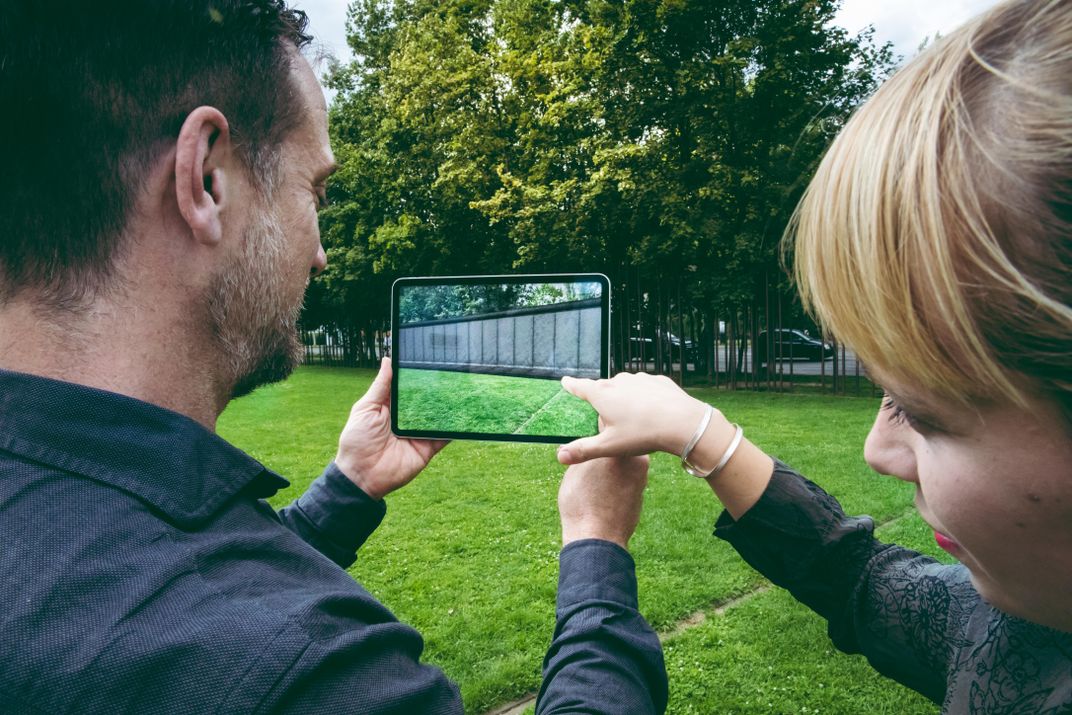Thirty Years After Fall of Berlin Wall, a Citywide Celebration
A week-long arts festival will feature concerts, immersive exhibitions, art installations, panel discussions and more
/https://tf-cmsv2-smithsonianmag-media.s3.amazonaws.com/filer/3b/54/3b543fe7-bbb3-4a8a-bc7d-e53db2fdd2ea/kunstinstallation-am-brandenburger-tor-kunstinstallation-patrick-shearn-of-poetic-kinetics-kuratiert-von-kulturprojekte-berlin.jpg)
This November, Germany’s capital is set to celebrate the 30th anniversary of the Berlin Wall’s fall with a festival featuring large-scale video projections, concerts, open-air exhibitions, an augmented reality app that temporarily resurrects the fractious barrier between east and west, and a floating art installation made up of 30,000 handwritten messages.
As Rachel Loxton reports for the Local, the week-long bash is scheduled to take place between November 4 and 10. Culminating in a musical extravaganza held on the exact date of the wall’s toppling—November 9—the festival will spotlight seven sites central to the so-called Peaceful Revolution, drawing on workshops, panel discussions, film showings, guided tours, poetry readings, theatrical performances and more to trace the timeline of events leading up to Germany’s reunification.
“History is best told at the original locations,” Moritz van Dülmen, CEO of event organizer Kulturprojekte Berlin, says in a press release. “To better understand the Peaceful Revolution and to celebrate the anniversary of the fall of the Wall, we will recount the events of 1989/90 precisely where they took place.”
According to Loxton and Kulterprojekte Berlin, the selected sites include Gethsemane Church, which emerged as a hub for opponents of East Germany’s regime, the German Democratic Republic; Alexanderplatz, where hundreds of thousands of protestors gathered for a November 4, 1989, rally; and Kurfürstendamm, an avenue where visitors will be able to hear stories of those separated by the wall.

Additional points of interest range from Schlossplatz, a square that represented the political heart of East Germany but will now focus on the first free elections held following the wall’s fall, to the former Stasi secret police headquarters and the East Side Gallery, which hosts murals painted on a leftover segment of the barrier.
MauAR—an augmented reality experience that allows users to visualize how the Berlin Wall once loomed over the city—will also debut five special festival episodes for the occasion. Participants can use the app to point at spots where the wall previously stood to go back in time. Those unable to travel to Berlin in person can still use the app, which rewinds the clock to 1961, 1971 and 1981, after the festivities end.
Perhaps the most ambitious aspect of the celebration is an art installation created by Patrick Shearn of Poetic Kinetics. Per the Art Newspaper’s Catherine Hickley, the artist—known for creating large-scale, suspended works designed to be displayed outdoors—has invited locals and tourists to submit messages for inclusion on a giant banner floating above the Brandenburg Gate. (Interested parties can stop by promotional stands situated across Berlin or send in thoughts online.)
The project portal prompts participants to describe their “hopes and dreams” for the present, as well as dreams for the future. Web users can also peruse others’ submissions: “My desire for the future is that there will continue to be people who stand up for walls to fall and not to be built,” one statement declares. Another reads, “Thank you that I can live in this free Germany.”
/https://tf-cmsv2-smithsonianmag-media.s3.amazonaws.com/accounts/headshot/mellon.png)
/https://tf-cmsv2-smithsonianmag-media.s3.amazonaws.com/accounts/headshot/mellon.png)